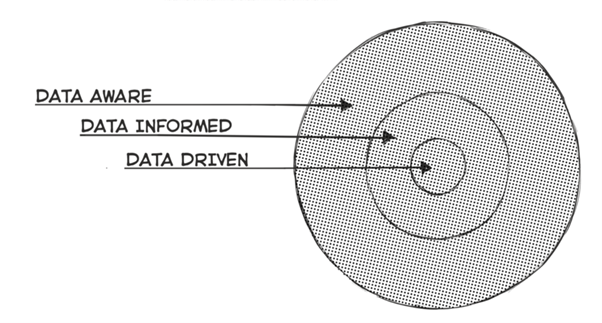UX writing is an important aspect of any business. When you develop your brand image and create content, how you will attract and retain customers is about more than just your marketing campaigns and your advertising content. A solid marketing strategy is key to conversion rates and growth, but your UX strategy is just as important—if not more so.
Your website’s UX design is ultimately what will convert potential buyers into customers—because your website is where the actual decisions are made. Good advertising can attract customers to your website, but if the website has a poor UX design, customers will leave just as fast as they came in.
Think of it as a photo versus the actual thing itself. You can take pretty pictures of a sandwich, for example, and entice your customers with them—but if the customer comes in close to take a whiff and it smells bad, they will be hesitant to buy it. Furthermore, if they actually get a sample of it and it tastes bad too, they definitely aren’t going to buy in or come back for more.
It’s a simple comparison, perhaps, but it helps paint a clear picture of why UX is so important, especially for B2B businesses. It’s all too common for brands to create highly appealing marketing content only to have a very poor website design. While this might work on occasion for the average consumer, business customers are more discerning and will be less likely to buy your product or service if they are led to a website with a bad UX design.
Thus, it is essential as a B2B business to put more thought and consideration into your UX writing if you want to attract and retain business customers.
What is UX Writing?
Though UX writing seems to be a hot new buzzword, it has been around for years. However, the reason it has likely gained more focus recently is that consumers are much more scrutinizing of brands than they once were. Today, the experience a user has when they interact with a brand is just as important as the product or service being purchased itself.
This is where UX comes in. UX literally stands for user experience. Thus, when we talk about UX design or UX writing, we are referring to the various components that make up a website that affect how the user or consumer connects and interacts with the brand and the products or services they are providing. And while UX is primarily discussed in reference to a brand’s website, it can also be used for things like email, mobile apps, live chats, and more. Overall, an effective UX strategy can drive engagement, improve conversion rates, mitigate uncertainty, help set expectations, provide empathy and increase user confidence, and avoid setbacks and friction.
The Difference Between UX Writing for B2B Versus B2C
While UX is essential for all businesses, it is important to understand the difference between UX for a B2B company versus UX for a B2C company—because they are not the same. As a B2B brand, you do not want to use the same UX strategy as you would for a business-to-consumer company. While the end goal is ultimately the same—making a sale—the user experience and buying process is often different for a business consumer compared to the average consumer.
This is because B2B consumers have different needs. For example, B2B purchases involve longer decision-making processes, higher price points, and rely less on market trends and influences based on product desirability. As such, B2B UX writing needs to:
- Support lengthier purchase decisions
- Provide highly informative content that touches on integration, compatibility, and regulations
- Speak to both users and decision-makers
- Offer complex pricing based on realistic scenarios
- Relate to varying scales of businesses without alienating audiences
These factors are all key to optimizing your conversion rates as a B2B brand. Again, conversion rates and making sales are essential for any business, but how you increase those rates and boost profits as a B2B company is not the same as what you would do as a B2C business. So it’s crucial to fully understand the differences to ensure your UX writing is targeting the correct audience.
One of the best ways to go about doing this is by starting with a solid data strategy. To understand your business customers, their behaviours, and how they make purchases different from the average consumer, you need to conduct research and analyze data and performance metrics.
Every business should know how to use analytics, especially B2B brands that need to cater to a more discerning, high-end audience. By collecting and analyzing data on your target consumers, you can increase your conversion rates and better optimize your UX writing.
Tips and Considerations for B2B UX Writing
Below are some essential tips and points to consider when developing your B2B UX writing:
- Clarity is king. Be as clear and informative as possible when catering to a business consumer audience.
- Focus on quality of design that strengthens your brand image and company policy.
- Be concise and efficient. Informative content and good design are key, but too much text and too many design elements can be distracting. So use minimalist solutions as much as possible.
- Be mindful of varying consumer segments. In other words, don’t use content or wording that excludes or alienates certain consumers. Inclusive UX design is essential today as you don’t want to exclude anyone no matter where they are located and what their limitations might be.
- Ensure your UX writing isn’t just informative but also useful. You want your users to fully understand how to navigate your site and be able to do so with ease to access what they are looking for.
- Make sure your CTA elements are clearly visible and easily accessed. Users should be able to quickly and efficiently take action when they are ready.
- Clearly show off your value proposition. B2B consumers should be able to immediately understand why your brand and the product or service you are providing are beneficial to them.
- Stick to brand voice. A brand voice that is unclear or that jumps all over the place presents a messy and unprofessional image. So make your brand voice clear and consistent throughout all content.
- Use testimonials to build trust. B2B products and services often have a higher price point and come with greater risk, so use testimonials to show that what you are offering works and has been a success for previous consumers.
- Provide accessible points of contact. Decision-makers and buyers should be able to easily get in contact with you at any point in their journey should they have questions or concerns. So make sure phone numbers, contact forms, chat services, or emails are easily seen.
Wrapping Up
Every strategy will be different depending on the individual brand, who the target audience is exactly, and what products or services are provided. Still, the considerations above are essential across the board, no matter the situation. Adhering to these tips and guidelines can help you improve your UX writing as a B2B brand, which in turn will help you increase conversion rates and grow your business.
![]() Give feedback about this article
Give feedback about this article
Were sorry to hear about that, give us a chance to improve.








